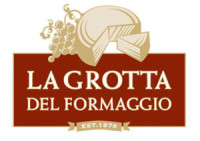The Aging Factor: How Age Impacts the Characteristics and Flavor Profile of Cheese
A common question when buying cheese is “does age matter?”
Cheese is a beloved culinary delight enjoyed by people all over the world, but what many may not realize is that age plays a significant role in shaping its characteristics and flavor profile. The process of aging cheese is a complex and nuanced one that involves chemical reactions and transformations taking place over time. In this article, we will explore how the aging factor impacts the texture, aroma, taste, and overall quality of cheese.
From soft and fresh cheeses to aged varieties with sharp flavors and crumbly textures, the science behind cheese is fascinating. Proteins break down into amino acids, creating new flavors and enhancing complexity. Fats within the cheese undergo oxidation, contributing to nutty or caramel notes.
These chemical changes are influenced by factors such as temperature, humidity, and specific enzymes present in the cheese. By understanding these processes, cheesemakers can manipulate aging conditions to create unique flavor profiles desired by consumers. Through controlled environments and precise timing, they can produce cheeses with distinct characteristics that appeal to a variety of palates.
Credit: Photo: Andrew Bui; Food Styling: Jessie YuChen
The aging process, also known as affinage, affects the texture, taste, and aroma of the cheese. The impact of age on cheese can vary depending on the type of cheese, and it’s commonly associated with both hard and soft cheeses.
Hard Cheeses
Flavor Development : Hard cheeses, such as cheddar, Gouda, or Parmesan, tend to develop more intense and complex flavors as they age. This is due to the breakdown of proteins and fats over time.
Texture: Aging contributes to the development of a firmer texture in hard cheeses. As they age, hard cheeses become more crumbly and may develop crystalline deposits, enhancing the overall texture.
Soft Cheeses
Texture Changes: Soft cheeses, like Brie or Camembert, generally have a softer and creamier texture when young. With age, these cheeses might become runnier as the interior breaks down, creating a gooey consistency.
Flavor Evolution: The flavor of soft cheeses can also evolve during the aging process, usually becoming more robust and intense. The rind of some soft cheeses may develop additional flavors as well.
Blue Cheeses: Mold Development: Blue cheeses, such as Roquefort or Gorgonzola, are intentionally aged to encourage the growth of mold. The aging process allows the mold to spread through the cheese, creating distinctive blue or green veins and contributing to the characteristic tangy flavor.
The age of cheese can significantly impact its taste, texture, and overall sensory profile of the cheese you choose to sell to your consumers. However, the effects of aging depend on the type of cheese, and each variety has its unique characteristics that develop and mature over time. Not all cheese ages the same and not all aging gives a positive or pleasing result. Still unsure, ping us and we will have one of the Team walk you through some great choices for your store or restaurant.




+ There are no comments
Add yours